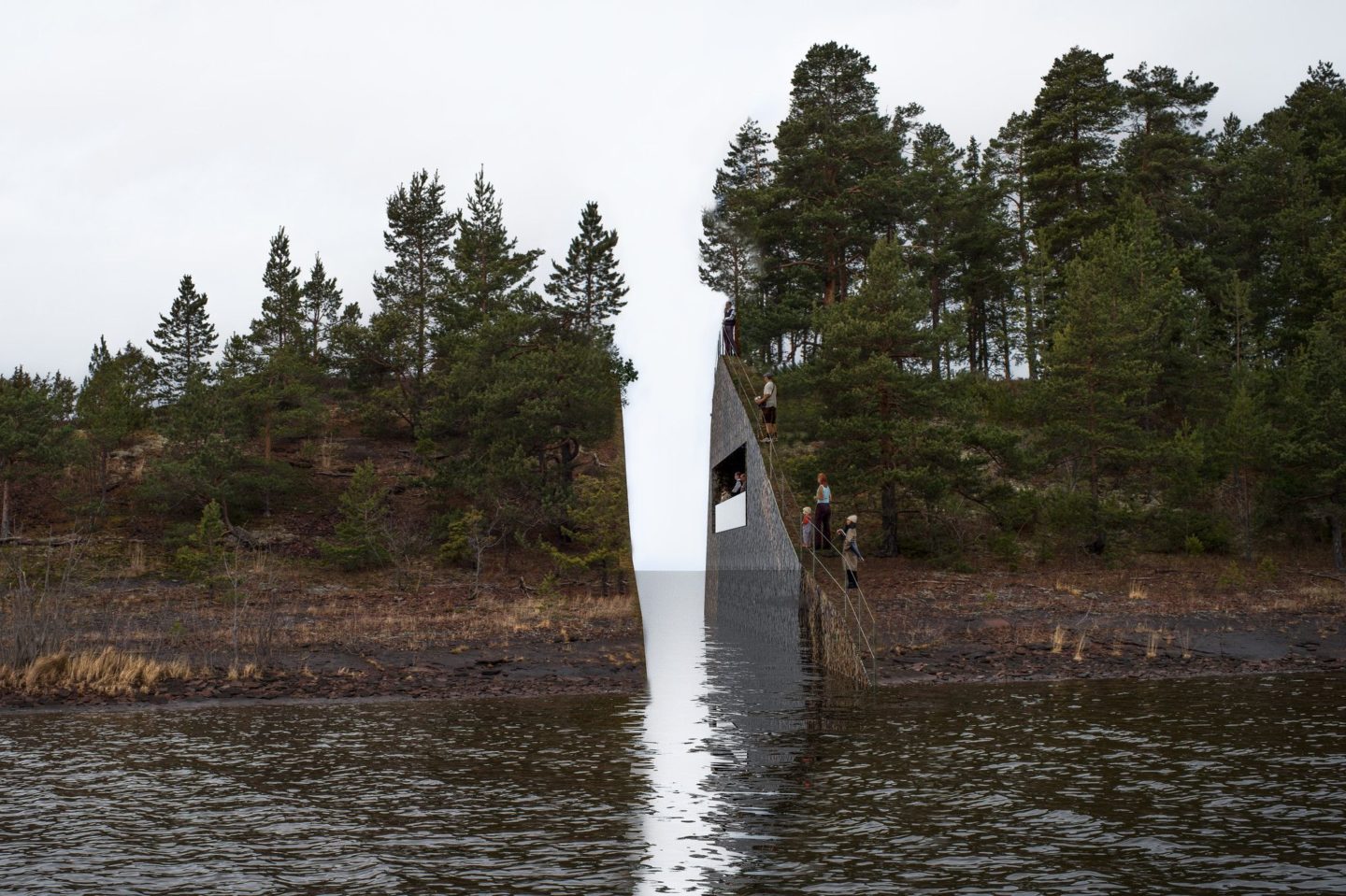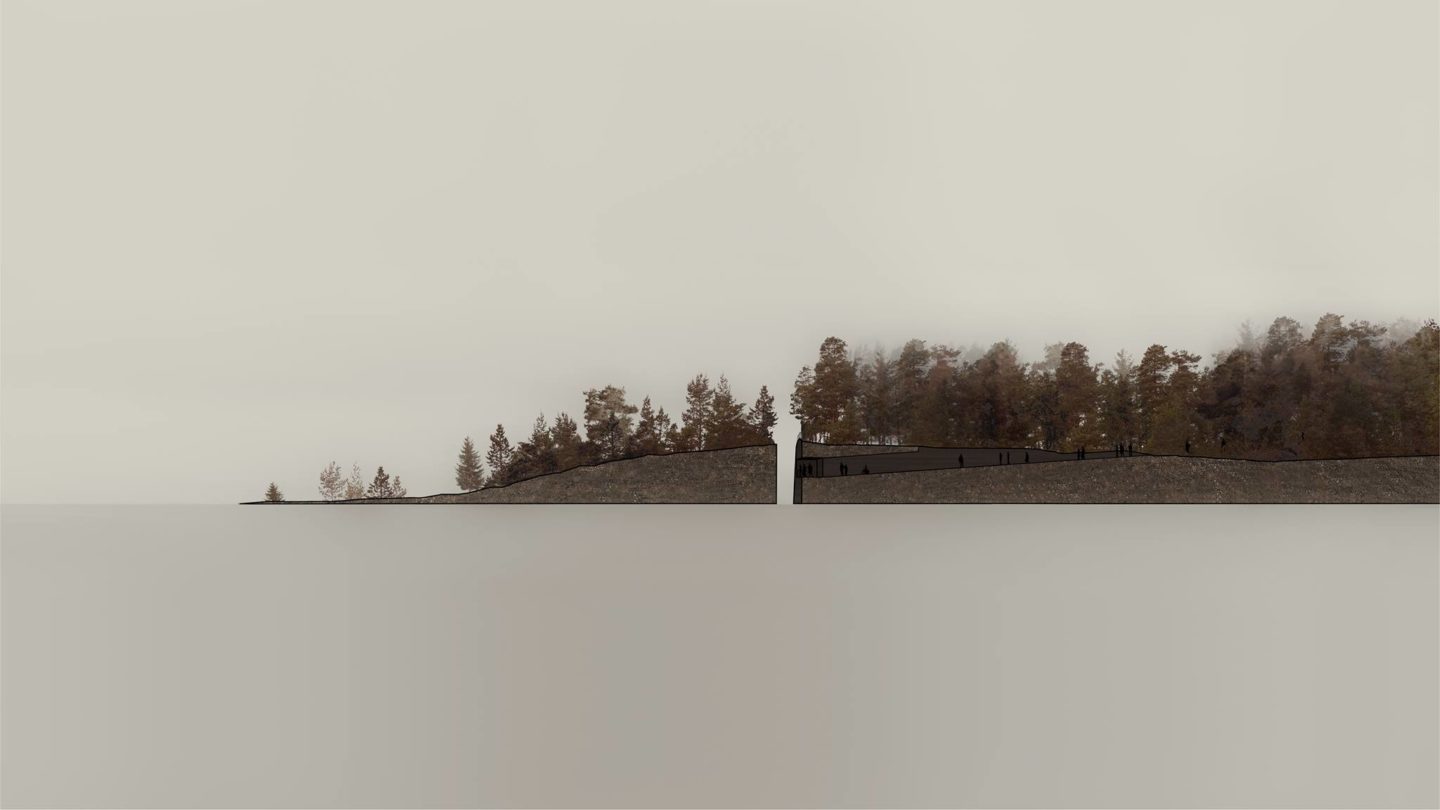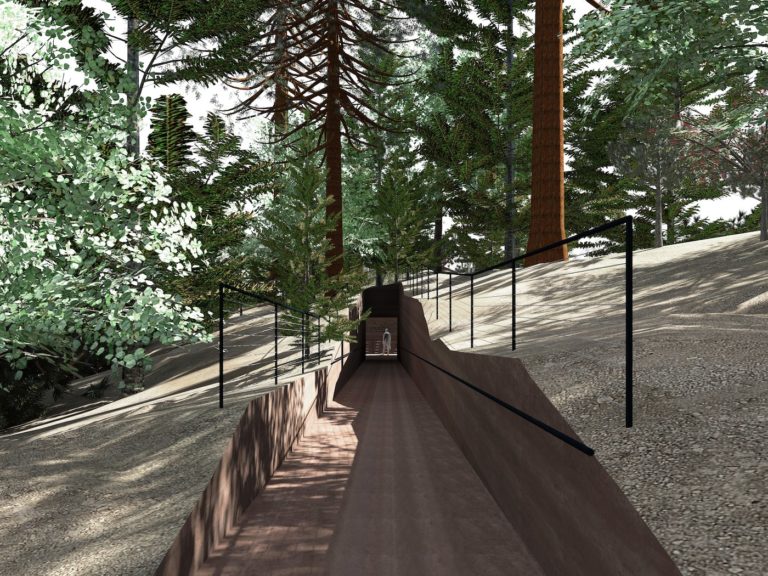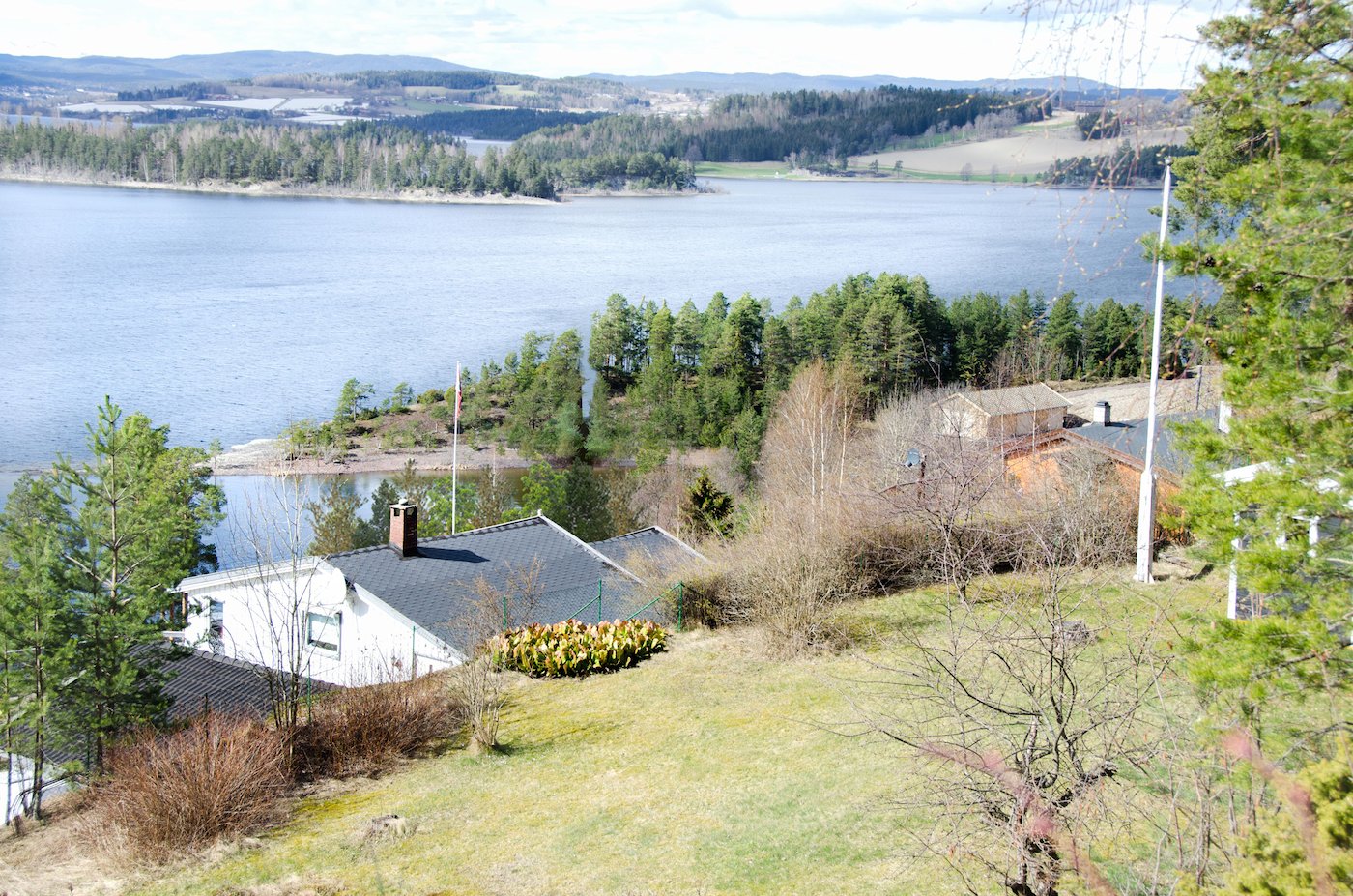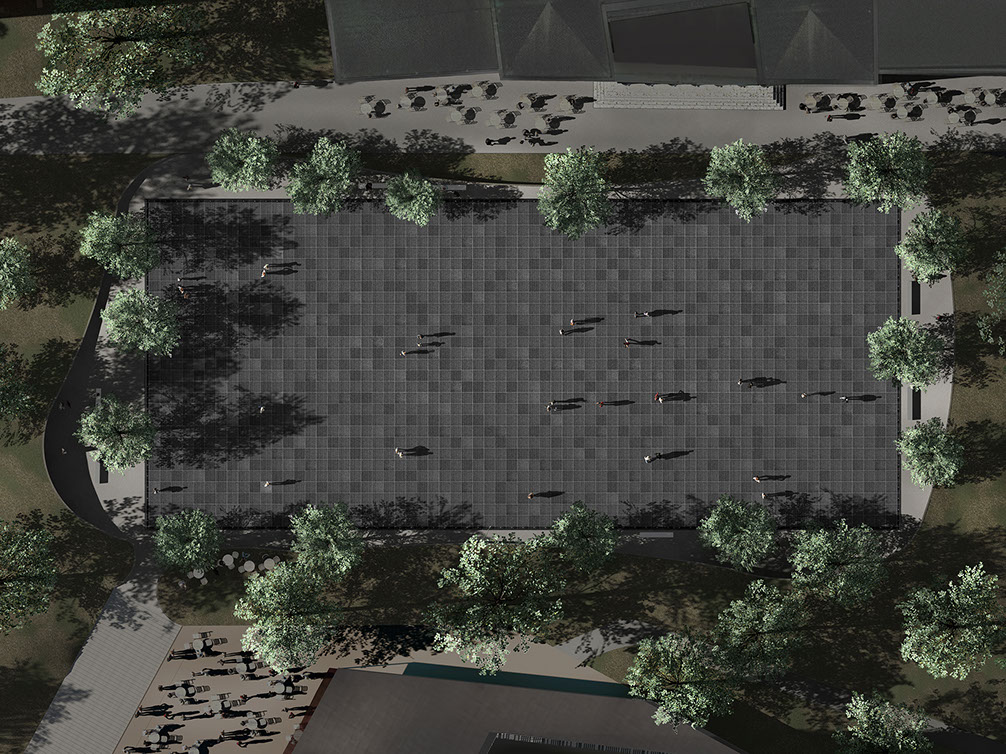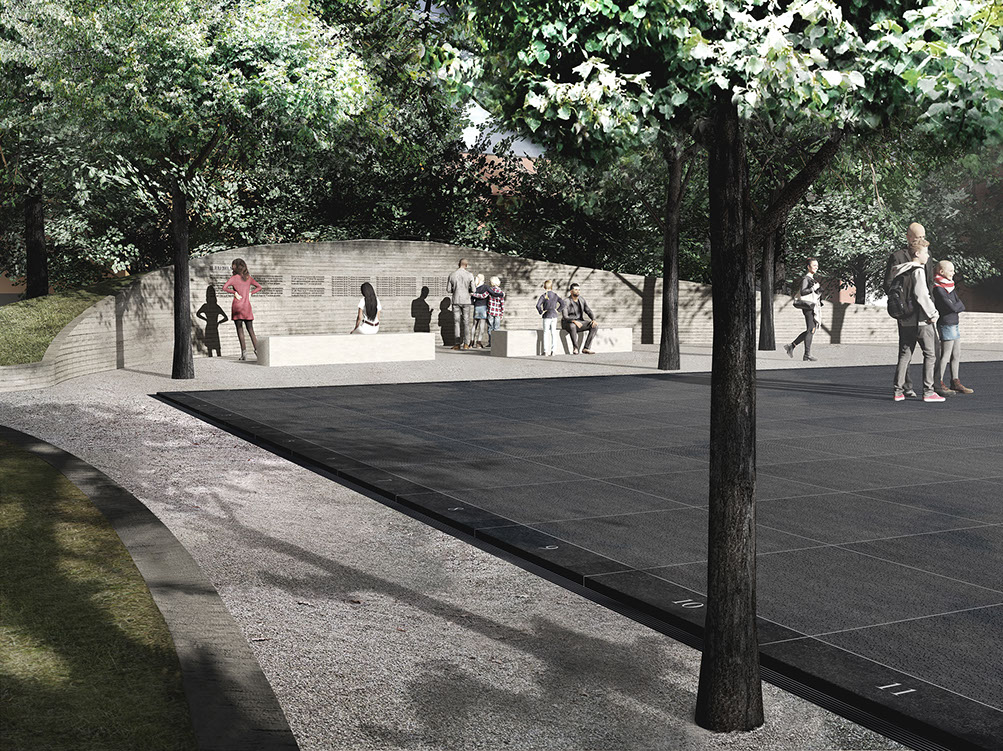Jonas Dahlberg, Memory Wound
In 2013, the Norwegian Government launched a competition for a memorial to the victims of attacks on the Utøya island and in Oslo. Both attacks took place two years earlier and were committed by the same right-wing extremist. In the terrorist’s own words, the events on July 22, 2011 were intended to attract the attention to his manifesto of an extreme-right ideology and the motivations behind the massacre were political. During the trial, he said: ” “This was the most sophisticated and spectacular political attack committed in Europe since the Second World War. I would have done it again”.
The terrorist killed 77 persons, eight by detonating a car bomb near the office of the Prime Minister of Norway and 69 gunning down the participants of the Labour Party’s youth camp on Utøya island. More than 300 people were injured. In 2012, the extremist received the highest possible sentence under the Norwegian law which is 21 years in prison.
The task given to the competition participants was quite a challenge. The organizers were planning three memorial sites: one on the Utøya island and two in Oslo, one of them being temporary. The artists also had to cope with the emotions after the terrorist’s massacre which were still very raw. The judging panel appointed to evaluate the submissions consisted, inter alia, of members of the victims’ families and representatives of the Labour Party who were to have a deciding vote about the form and location of the memorials. Supervision over the entire project was exercised by KORO, a Norwegian government agency in charge of architectural designs and artworks exhibited in public space which in Norway is treated as a common good.
Eight designs were initially selected from all the submissions. Their authors included many celebrities, such as Jeremy Deller, the winner of the prestigious Turner Award and famous design office renowned for unique memorial realizations, such as Paul Murdoch Architects (The Flight 93 National Memorial in Pennsylvania) and Goksøyr & Martens/Snøhetta (National September 11 Memorial Museum Pavilion in New York). But the biggest highlight was the Memory Wound designed by a Swedish artist Jonas Dahlberg who is vividly interested in the psychological impact of architecture. Dahlberg proposed a highly radical intervention. He decided to cut through the Sørbråten peninsula which faces Utøya. According to the design, a 3.5 meter wide gap was to be cut in the rocks across the entire peninsula reflecting the title wound. The names of the persons killed would be carved on the walls. The separated part of the peninsula would represent a symbolic gesture of mental separation from the tragic events in order to allow Utøya to continue functioning as avenue for the Labour Party meetings and congresses. In Dahlberg’s concept, the rocks removed from the peninsula would be used in the construction of the Oslo memorial. They were supposed to be cut into slates and transported to the square in front of the Norwegian parliament where they would be arranged in the scenery of the nearby park Design of a memorial site in Oslo, Jonas Dahlberg, 2013-2014, https://www.jonasdahlberg.com/22-july-memorial-oslo.html↩︎.
Dahlberg’s spectacular design involving a radical and costly intervention into the structure of the peninsula won the competition in 2014 almost unanimously, however, after fierce protests of the local community the project was abandoned. The Memory Wound proposal turned out to be too bold and had too strong impact on the trauma caused by the massacre. Some of the opponents of the radical design referred to the concerns of geologists who called the planned intervention a “rape of nature”. There were also fears that the installation will attract lots of tourists wanting to see the memorial by themselves and possibly also the supporters of the terrorist’s ideology. The decision to abandon the project triggered various reactions.
Finally, one of the memorials in honour of the victims of the Utøya massacre is the Lysingen (The Clearing) of 2015 designed by 3RW Architects. It s a modest, metal ring suspended from the trees in the middle of the forest on the island on Tyrifjorden lake with the names of all victims Lysingen, 3RW Architects, 2015, https://3rw.no/work/the-clearing-memorial-at-utoya/↩︎.
In 2018, in the Johan Nygaardsvold square near the place where the car bomb was detonated a memorial plaque was unveiled to commemorate the tragic events of July 22, 2011. The Norwegian officials emphasize that this is a temporary site Norway unveils Utøya monument on day of remembrance, “The Local”, 23-07-208, https://www.thelocal.no/20180723/norway-unveils-utya-monument-on-day-of-remembrance↩︎.
